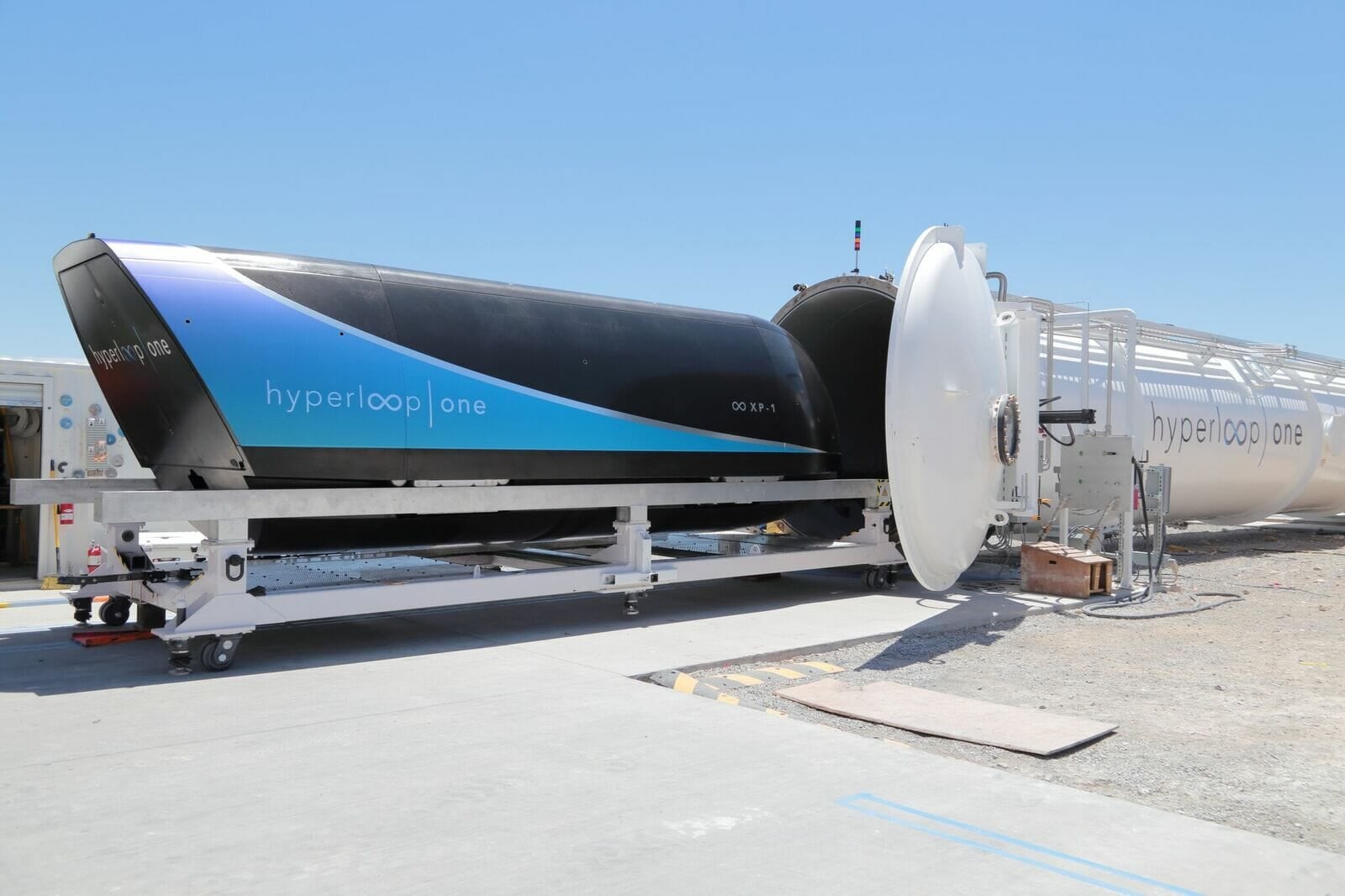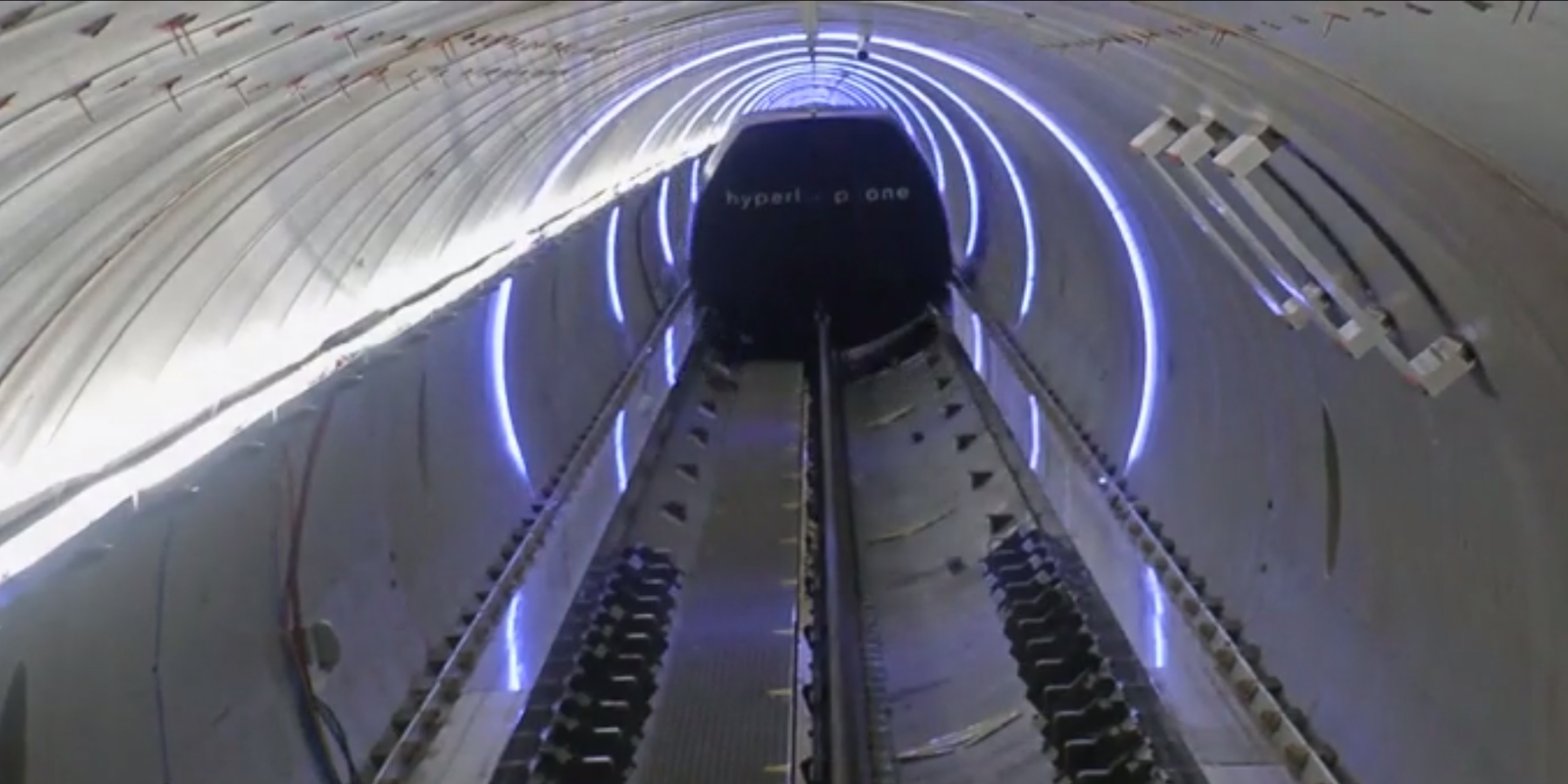In July, Hyperloop One announced the first successful full-scale test of a hyperloop sled in vacuum conditions. But at 69 miles per hour, the hyperloop traveled no faster than the top speed of a car, and nowhere near its estimated top speed of 750 miles per hour. The so-called “Kitty Hawk” moment left us wanting more.
Today, just weeks after its first test, Hyperloop One released a video showing its 3,000 pound XP-1 prototype passenger pod traveling at a staggering 192 miles per hour. This time, it did not disappoint.
https://www.youtube.com/watch?v=uLh1alyhc1E
Like a scene from Tron, the Hyperloop One’s XP-1 pod shoots up the tube, which is depressurized to the equivalent of air at 200,000 feet above sea level. The pod accelerates gradually using electric propulsion before quickly lifting off the tracks via magnetic levitation, allowing it to smoothly travel at airline speeds with low aerodynamic drag.
Hyperloop One claims this is the fastest test ever conducted, which shouldn’t come as a surprise considering it’s the only company with an operational hyperloop system. Still, at 192 mph, the “Phase 2” test is a huge leap from the test conducted just a few weeks before. Not only was it faster, but the XP-1 also traveled 1,433 feet—more than four times farther than the sled in the first test and nearly the entire length of the 500-meter Nevada test track. The XP-1, which looks like a high-speed train without wheels, is 28 feet long and constructed of aluminum and carbon fiber.

“We’ve proven that our technology works, and we’re now ready to enter into discussions with partners, customers and governments around the world about the full commercialization of our Hyperloop technology,” Hyperloop One CEO Rob Lloyd said. “We’re excited about the prospects and the reception we’ve received from governments around the world to help solve their mass transportation and infrastructure challenges.”
The next step for Hyperloop One is to continue testing and lock down locations for its first full-scale commercial installment. The company currently has feasibility studies underway in the United Arab Emirates, Finland, Sweden, the Netherlands, Russia, Switzerland, and the U.K. It has also been eyeing Texas, Colorado, and Nevada as the first U.S. locations.


